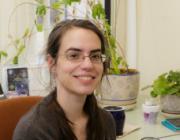Abstract:
On July 30th, 2019 IceCube detected a high-energy astrophysical muon neutrino candidate, IC-190730A with a 67% probability of astrophysical origin. The flat spectrum radio quasar (FSRQ) PKS 1502 +106 is in the error circle of the neutrino. Motivated by this observation, we study PKS 1502+106 as a possible source of IC-190730A. PKS 1502+106 was in a quiet state in terms of UV/optical/X-ray/γ-ray flux at the time of the neutrino alert, we therefore model the expected neutrino emission from the source during its average long-term state, and investigate whether the emission of IC-190730A as a result of the quiet long-term emission of PKS 1502+106 is plausible. We analyse UV/optical and X-ray data and collect additional observations from the literature to construct the multi-wavelength spectral energy distribution of PKS 1502+106. We perform leptohadronic modelling of the multi-wavelength emission of the source and determine the most plausible emission scenarios and the maximum expected accompanying neutrino flux. A model in which the multi-wavelength emission of PKS 1502+106 originates beyond the broad-line region and inside the dust torus is most consistent with the observations. In this scenario, PKS 1502+106 can have produced up to of order one muon neutrino with energy exceeding 100 TeV in the lifetime of IceCube. An appealing feature of this model is that the required proton luminosity is consistent with the average required proton luminosity if blazars power the observed ultra-high-energy-cosmic-ray flux and well below the source's Eddington luminosity. If such a model is ubiquitous among FSRQs, additional neutrinos can be expected from other bright sources with energy ≳ 10 PeV.
Website

